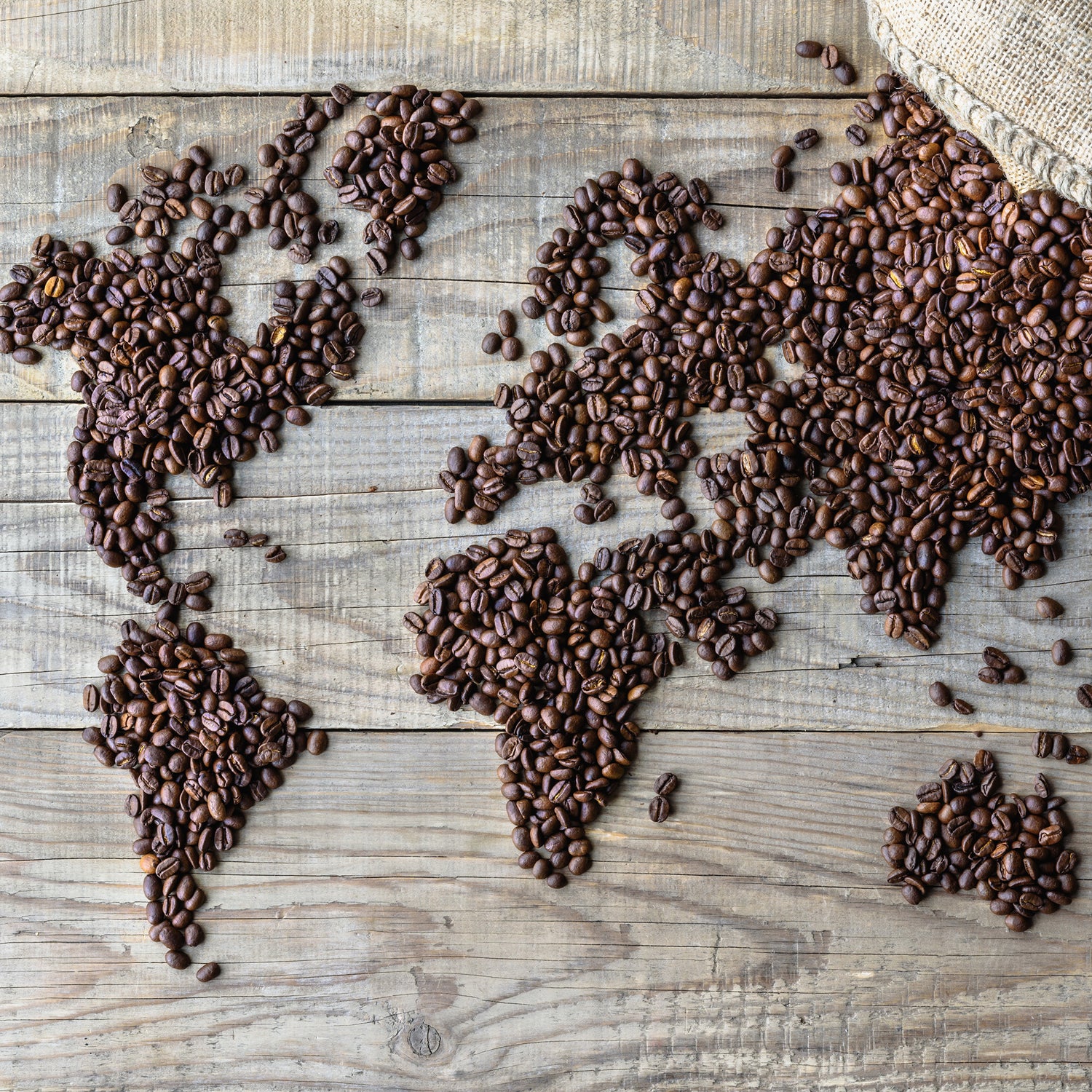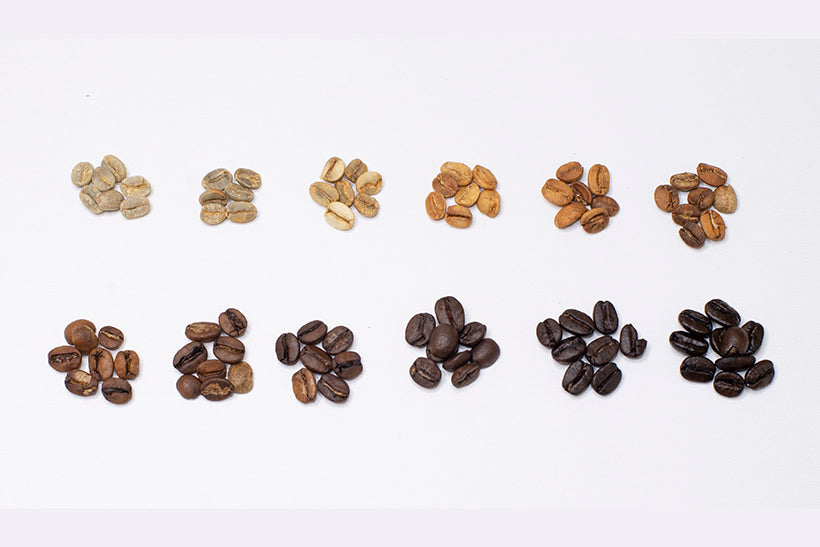
Roast Levels - The Basics
In this article we'll go through the various different levels you can roast coffee to, and how that impacts the flavour. As discussed in our previous article on coffee flavour, coffee beans are really the seeds from the coffee cherry. Once processed, they are generally a light green colour. The green bean colour will vary based on variety, origin, processing, moisture level, age etc.
As you roast coffee beans, they change colour, lose moisture, expand, and become brittle (more suitable for grinding). The colour changes are what most people associate with roast degrees (light, medium, dark etc.), but there isn't a universally accepted naming convention that coffee roasters use. Which means what one roaster calls their light roast, may be another roaster's medium.
Hopefully this guide will help you choose roast degrees to suit your tastes.
The Drying Phase
I've used some Brazilian beans for this example, here they are straight out of the sack.

In the first few minutes of roasting, the beans lose moisture, and start to turn from green to yellow. Here they are after four minutes. You can see some of the silver skin (chaff) layer starting to peel away.

After five minutes you can really start to see the colour change. At this point the aroma given off is 'grassy' and 'bready'.

The Browning, or 'Maillard' Phase
As the roast progresses, the beans will turn from yellow to light brown.

The Maillard reaction is a chemical reaction between amino acids and reducing sugars that gives browned food its distinctive flavour. That's right, the chemical changes to coffee as it's being roasted are the same chemical changes that occur in seared steak, toasted marshmallows, cookies, and breads.
It is named after the French chemist Louis Camille Maillard who first described it in 1912.

First Crack
As the bean temperature gets towards 380F, the beans will start to emit a popping noise that sounds like popcorn. This is the 'first crack'. The beans will expand, and expel water vapour and CO2, and also some chaff (silver skin).
Cinnamon Roast (Approx 390F)
Right around first crack is when 'Cinnamon' Roasts are dropped, this is the first point at which the coffee is drinkable. These very light roasts are popular with some coffee aficionados, but are not favoured by most coffee drinkers. Coffee roasted this light will exhibit grassy and peanutty flavours, with very high acidity.
We don't currently roast any coffee to this level.

City Roast (Up to 410F)
Coffee dropped during the last stages, or just after first crack, will be visibly dry, with no oil on the bean's surface. The 400F to 410F temperature range covers a variety of common roast names:
City Roast / New England Roast: 400F - 405F
American Roast: 410F
These roasts produce light bodied coffee with high acidity, and are most popular amongst third or fourth wave roasters. Light roasts really bring out the origins of each bean, as there are very little 'roasty' elements affecting the flavour. Our Light roasted coffees are acidic, sweet, with hints of caramel, and floral, fruity aromatics. Best brewed using a pour over or filter/drip method.
You can browse our Light Roasted coffees here.

Full City (Up to 430F)
Roasts dropped between first and second crack are known as Full City. This is the 'crowd pleaser' roast level for most people, although it verges on the lighter end of large coffee companies like Starbucks. Our Full City (Medium) roast would be the equivalent of their 'Blonde' roast. The larger roasters don't really do a true 'light roast', they just do a slightly less burnt version of their normal coffee.
Full City roasted beans haven't yet formed surface oils, and have a wonderful balance of acidity, body, and smooth caramels and chocolate flavours.
You can browse our Medium Roasted coffees here.

Viennese (Up to 450F)
After Full City, there is a second release of CO2 (second crack), which also pushes oils to the surface of the bean. Coffee roasted to second crack exhibit low acidity, less of the origin flavours, and more smoky notes.
Our Dark roasted coffees are roasted to this level, and are caramelly, nutty, and spicy, with a heavy body; great for espresso and milk based drinks.
You can browse our Dark Roasted coffees here.

French / Italian Roast
After the Viennese roast, you then have French (~460F) and Italian (~475F) roast levels. We don't roast any of our coffees to this level, as you lose the origin flavours of the beans, and replace them with burnt and bitter notes. Many larger roasters will roast this dark, and use lower quality beans due to that fact you can't actually taste the beans themselves, just the remnants of the roasting process.
Coffee roasted this dark and oily goes rancid very quickly, due to the fact the bean structure is completely carbonized, therefore it oxidizes very rapidly.
Also, using very dark, oily roasts can clog up your grinder/espresso machine over time, as they require more frequent cleaning with these types of beans.

Summary
I hope this article is helpful in understanding roast levels. As I said at the beginning, there isn't one universally accepted standard for roast degree, every coffee roastery is different. At Black Creek Coffee we roast from City (400F) to Viennese (450F), with each of the roast levels (Light, Medium, or Dark) in the product description.
The final temperature that coffee is roasted to is only one part of the roasting process. The shape of the overall roast profile (temperature change over time) also determines a large part of the coffee's flavour and development characteristics. Happy drinking!


